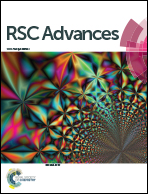Half-metals and half-semiconductors in a transition metal doped SnSe2 monolayer: a first-principles study
Abstract
Recently, a new two-dimensional (2D) semiconductor SnSe2 monolayer has been grown by molecular beam epitaxy, and weak ferromagnetic behavior above room temperature in Mn-doped SnSe2 thin films was also observed experimentally. Here, using first-principles calculations, we investigate the structural, electronic, and magnetic properties of an SnSe2 monolayer doped with transition metals V, Cr, Mn, Fe, Co, Ni and Cu. The calculated formation energies indicate that it is energetically favorable and relatively easy to incorporate these transition metals except for Cu into the SnSe2 monolayer under Se-rich conditions. Doping induces considerable magnetic moments except for the Ni-doped system. Long-range ferromagnetic order is observed for V, Cr and Fe doping, and Mn doping has a short-range ferromagnetic order. Cu doping has an antiferromagnetic ground state. Within generalized gradient approximation, interestingly, both ferromagnetic V doping and metastable ferromagnetic Cu doping exhibit half-metallicity. Both Mn- and Fe-doped SnSe2 monolayers are half-semiconductors. These properties are governed by the transition metal 3d orbital splitting under the crystal field and p–d hybridization. Within hybrid functional or spin–orbit coupling, the V-doped SnSe2 monolayer becomes a half-semiconductor, and the Cu-doped SnSe2 monolayer is still a half-metal. These studies indicate the promising spintronic applications for 2D semiconductor SnSe2 doped by transition metals.



 Please wait while we load your content...
Please wait while we load your content...